Yudan Liu
Personalized Transfer of User Preferences for Cross-domain Recommendation
Oct 22, 2021



Abstract:Cold-start problem is still a very challenging problem in recommender systems. Fortunately, the interactions of the cold-start users in the auxiliary source domain can help cold-start recommendations in the target domain. How to transfer user's preferences from the source domain to the target domain, is the key issue in Cross-domain Recommendation (CDR) which is a promising solution to deal with the cold-start problem. Most existing methods model a common preference bridge to transfer preferences for all users. Intuitively, since preferences vary from user to user, the preference bridges of different users should be different. Along this line, we propose a novel framework named Personalized Transfer of User Preferences for Cross-domain Recommendation (PTUPCDR). Specifically, a meta network fed with users' characteristic embeddings is learned to generate personalized bridge functions to achieve personalized transfer of preferences for each user. To learn the meta network stably, we employ a task-oriented optimization procedure. With the meta-generated personalized bridge function, the user's preference embedding in the source domain can be transformed into the target domain, and the transformed user preference embedding can be utilized as the initial embedding for the cold-start user in the target domain. Using large real-world datasets, we conduct extensive experiments to evaluate the effectiveness of PTUPCDR on both cold-start and warm-start stages. The code has been available at \url{https://github.com/easezyc/WSDM2022-PTUPCDR}.
Learning to Expand Audience via Meta Hybrid Experts and Critics for Recommendation and Advertising
May 31, 2021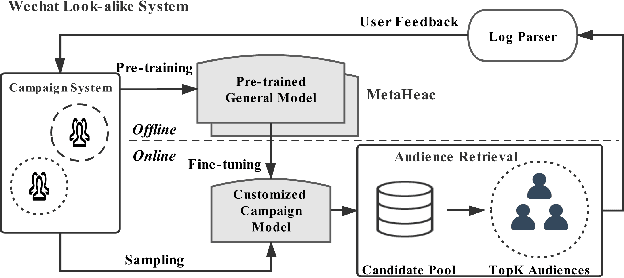

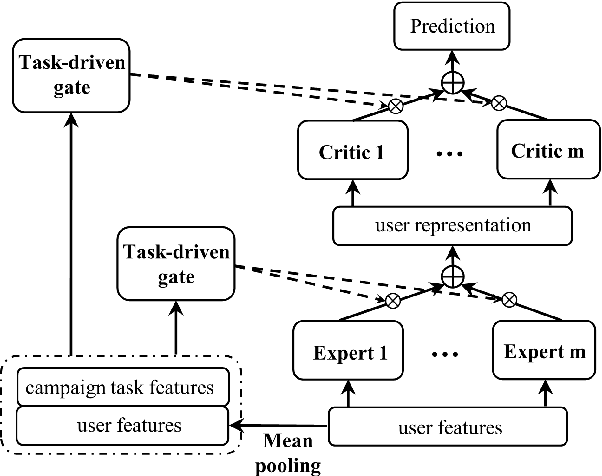
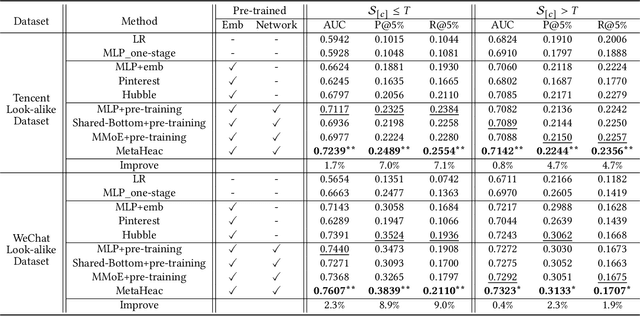
Abstract:In recommender systems and advertising platforms, marketers always want to deliver products, contents, or advertisements to potential audiences over media channels such as display, video, or social. Given a set of audiences or customers (seed users), the audience expansion technique (look-alike modeling) is a promising solution to identify more potential audiences, who are similar to the seed users and likely to finish the business goal of the target campaign. However, look-alike modeling faces two challenges: (1) In practice, a company could run hundreds of marketing campaigns to promote various contents within completely different categories every day, e.g., sports, politics, society. Thus, it is difficult to utilize a common method to expand audiences for all campaigns. (2) The seed set of a certain campaign could only cover limited users. Therefore, a customized approach based on such a seed set is likely to be overfitting. In this paper, to address these challenges, we propose a novel two-stage framework named Meta Hybrid Experts and Critics (MetaHeac) which has been deployed in WeChat Look-alike System. In the offline stage, a general model which can capture the relationships among various tasks is trained from a meta-learning perspective on all existing campaign tasks. In the online stage, for a new campaign, a customized model is learned with the given seed set based on the general model. According to both offline and online experiments, the proposed MetaHeac shows superior effectiveness for both content marketing campaigns in recommender systems and advertising campaigns in advertising platforms. Besides, MetaHeac has been successfully deployed in WeChat for the promotion of both contents and advertisements, leading to great improvement in the quality of marketing. The code has been available at \url{https://github.com/easezyc/MetaHeac}.
Real-time Attention Based Look-alike Model for Recommender System
Jun 12, 2019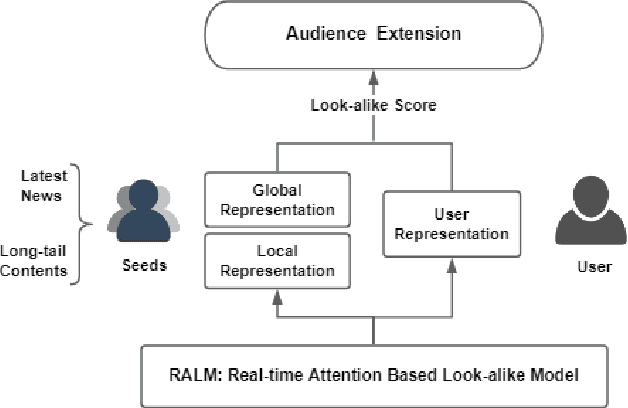
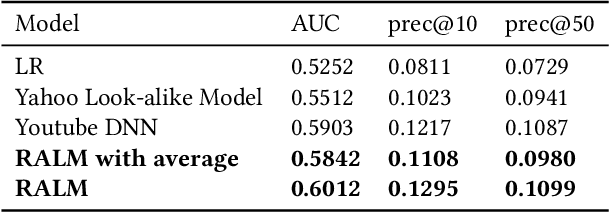
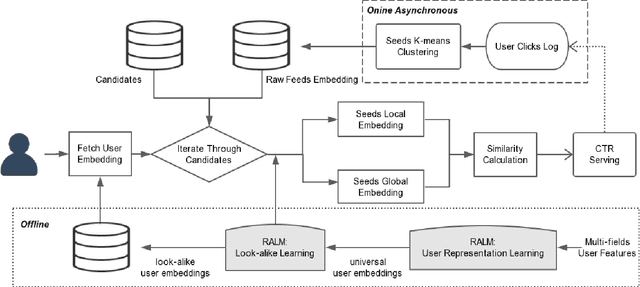
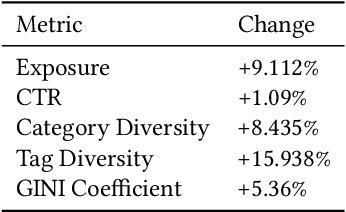
Abstract:Recently, deep learning models play more and more important roles in contents recommender systems. However, although the performance of recommendations is greatly improved, the "Matthew effect" becomes increasingly evident. While the head contents get more and more popular, many competitive long-tail contents are difficult to achieve timely exposure because of lacking behavior features. This issue has badly impacted the quality and diversity of recommendations. To solve this problem, look-alike algorithm is a good choice to extend audience for high quality long-tail contents. But the traditional look-alike models which widely used in online advertising are not suitable for recommender systems because of the strict requirement of both real-time and effectiveness. This paper introduces a real-time attention based look-alike model (RALM) for recommender systems, which tackles the challenge of conflict between real-time and effectiveness. RALM realizes real-time look-alike audience extension benefiting from seeds-to-user similarity prediction and improves the effectiveness through optimizing user representation learning and look-alike learning modeling. For user representation learning, we propose a novel neural network structure named attention merge layer to replace the concatenation layer, which significantly improves the expressive ability of multi-fields feature learning. On the other hand, considering the various members of seeds, we design global attention unit and local attention unit to learn robust and adaptive seeds representation with respect to a certain target user. At last, we introduce seeds clustering mechanism which not only reduces the time complexity of attention units prediction but also minimizes the loss of seeds information at the same time. According to our experiments, RALM shows superior effectiveness and performance than popular look-alike models.
 Add to Chrome
Add to Chrome Add to Firefox
Add to Firefox Add to Edge
Add to Edge